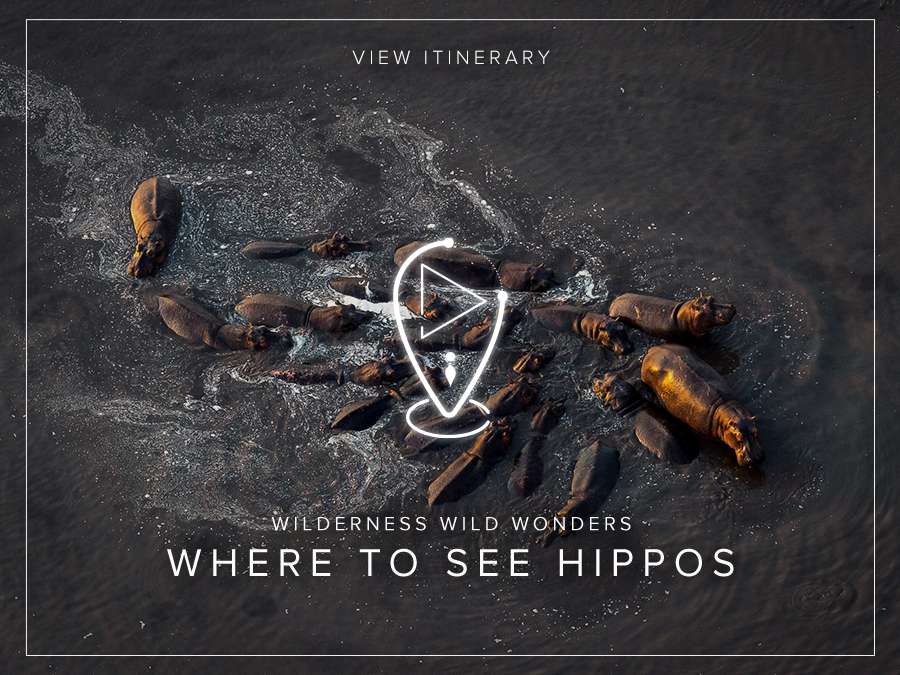Celebrating Africa’s Weird and Wonderful River Horses
Hippos are the true giants of Africa’s river systems, but what do we actually know about them, except that they are frighteningly big?
Join us today in learning more about these interesting creatures while celebrating their uniqueness.
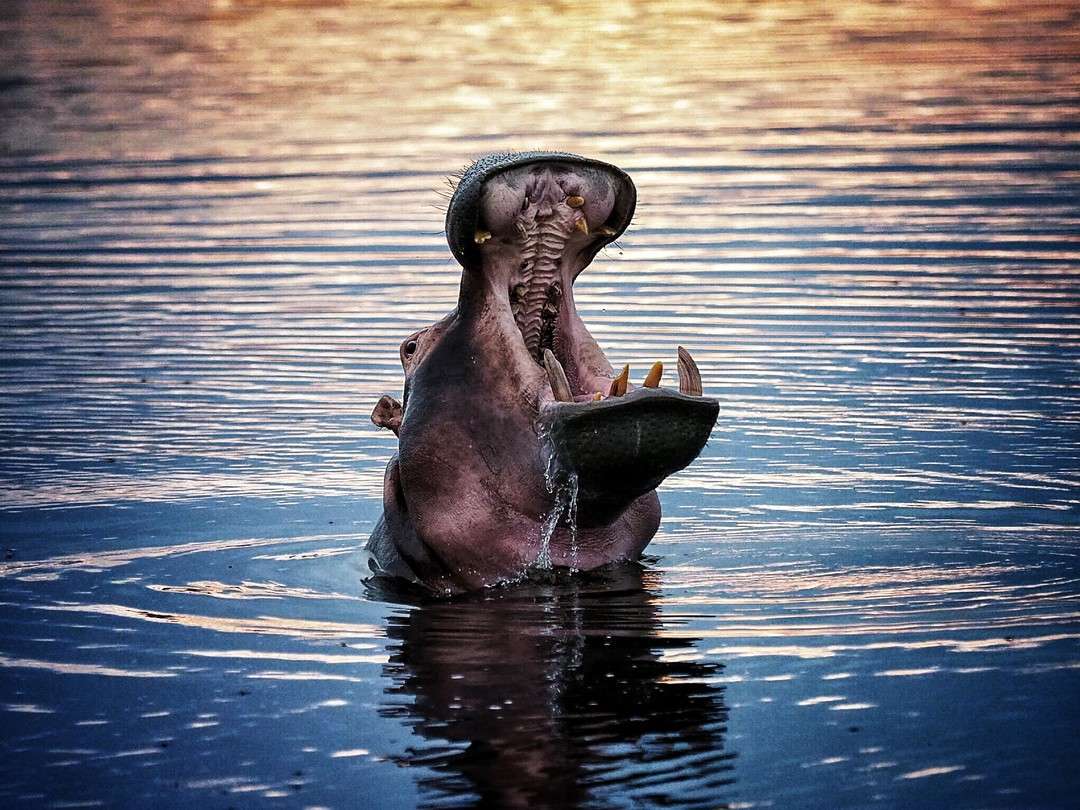
Named by the Greeks
The full scientific name for the hippopotamus Hippopotamus amphibius is derived from the ancient Greek term for “river horse”. Hippopótamos is a combination of the words híppos (“horse") and potamós (“river”) However, they are nowhere near related to horses, though these animals do spend up to 16 hours a day submerged in rivers, lakes or any type of shallow water source.
Hippos live in water, but can they swim?
No, not at all! This is because when compared to other aquatic animals that can swim, they lack webbing on their feet and flippers, or a tail for propulsion. Instead, they are regarded as bottom dwellers and fulfil a vital function as dredgers, keeping slow-moving waterways open and maintaining channels threatened by siltation and vegetation growth. However, they are buoyant and can push their way to the surface in deep water before slowly returning to the bottom again.
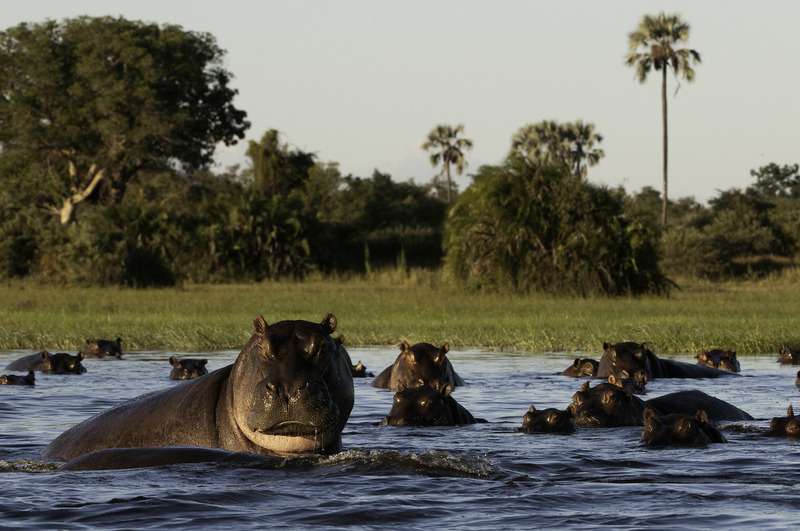
As they are air-breathing animals with lungs, hippos can only stay under the water for about five minutes, and if the water is too deep to reach the surface for air, they can drown. Therefore, they prefer habitats with slow-moving water that is deep enough for them to submerge, but not so deep as to make surfacing for air impossible.
Catching some Rays? Hippos Secrete Their Own Natural Sunscreen
The hippo’s sensitive skin necessitates their spending a lot of time in water to avoid the sun. However, if they do need to emerge during the day, a reddish skin secretion creates a sunscreen effect and prevents sunburn. The secretion starts out colourless, turning reddish orange upon exposure, and then ultimately turns brown. It contains red and orange pigments, with both absorbing light in the UV range, easing dehydration and forming a protective layer on the skin.

The Bigger the Better – Look at My Teeth!
The large teeth of the hippo are used in visual displays, usually showing off to competitors or intruders by way of yawning, and for fighting each other or enemies. The large teeth visible in the front of the mouth are widely spaced and quite long, but are useless for gathering or chewing food. However, they can inflict serious wounds. Their large mouths, and gape and strength of their jaw muscles, produce a powerful weapon that can chop an animal in two. However, it is the broad, flat cheek teeth that are used to break down grass while feeding.
Talking Hippos? A Wheeze and a Honk Mean More Than Just “Hello”!
Recently, researchers in Mozambique’s Maputo Special Reserve studying hippos and the function of their call, revealed that the creatures not only react to the vocalisations of other hippos, but that the calls act as an identity signal. In other words, they allow hippos to tell the difference between a familiar individual and a stranger.
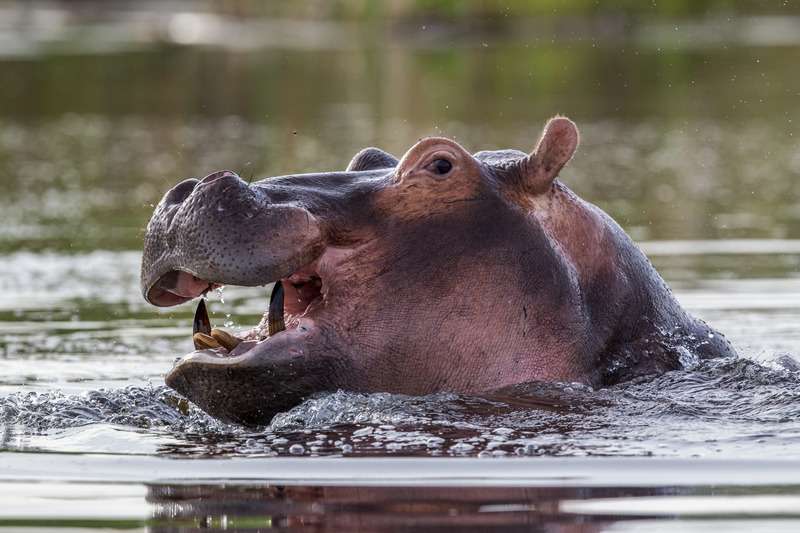
“Hippos are quite talkative. They have a repertoire of different calls: wheeze honks, grunts, bellows and squeals”, says Prof. Nicolas Mathevon, a Professor in Animal Behaviour at the University of Saint-Etienne in France and co-author of the Mozambican study, published in the journal Current Biology.
Mathevon and colleagues studied the loud “wheeze honk” calls of hippos – a sound not unlike a growling laugh. The team recorded calls from individual hippos within groups – or pods – living in both the same and different lakes in the reserve.
Five pods were then played back calls from an individual in their own group, a neighbouring group at the same lake, and a distant group of hippos that were strangers to them, while two pods were played calls from their own group and a distant group.
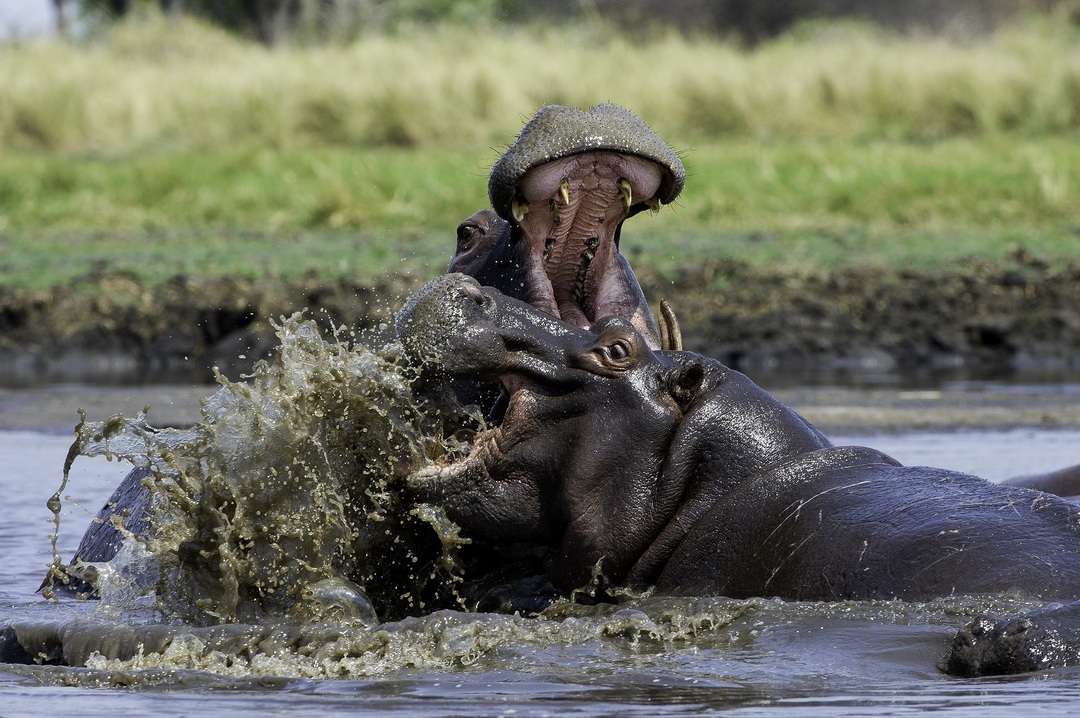
The team found that hippos responded to the calls by either calling back, approaching the sound or by spraying dung. The latter, however, was more common when the call was from a stranger than from a hippo of the same or neighbouring group. When familiar calls were played back, the reaction was not aggressive, and the hippos basically just called back. Also, the hippos’ responses were stronger for calls from individuals that were less familiar.
The experiments and results obtained suggest that in hippos, the arrival of a stranger individual is perceived as more threatening than that of a neighbour. It was no surprise that hippos use vocalisations to communicate – as they are an excellent way to send information – but the results clearly show that hippo groups are territorial. These experiments also show that wheeze honks can travel more than 1 kilometre (0.6 miles), suggesting hippos would be familiar with the calls of others living on the same lake.
“The most interesting thing to come out of this study is that hippos may have a fine-grained knowledge of the voices of all the individuals around them, and that this knowledge can help them navigate within their social network,” adds Mathevon.
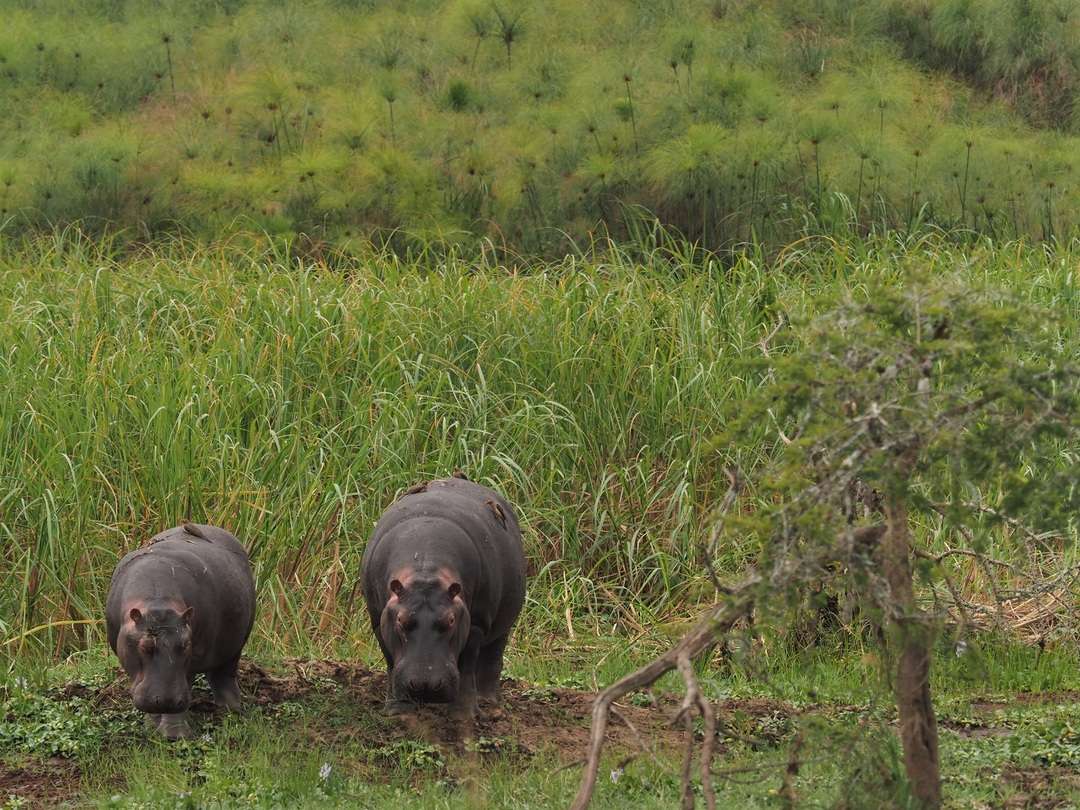
Hippo Dung Shower – A Frequent and Ritualized Territorial Behaviour
Territorial bull hippos have frequent and ritualized encounters. After approaching the boundary of their territories, they stop and stare at each other, then turn tail, elevate their rumps, and shower dung and urine over each other with rapidly paddling tails.
Adding to this, conspicuous dung middens can be found along hippo paths, which start at the water’s edge, where passing hippos add their excrement, which may also assist in orientation and communication at night. These middens are most frequently found near shore and are renewed nightly on their way to pasture. Hippos may also emerge during the day to defecate on shoreline dung heaps and on rocks or islands in the water. Bull excrement is particularly smelly and interesting to other hippos.
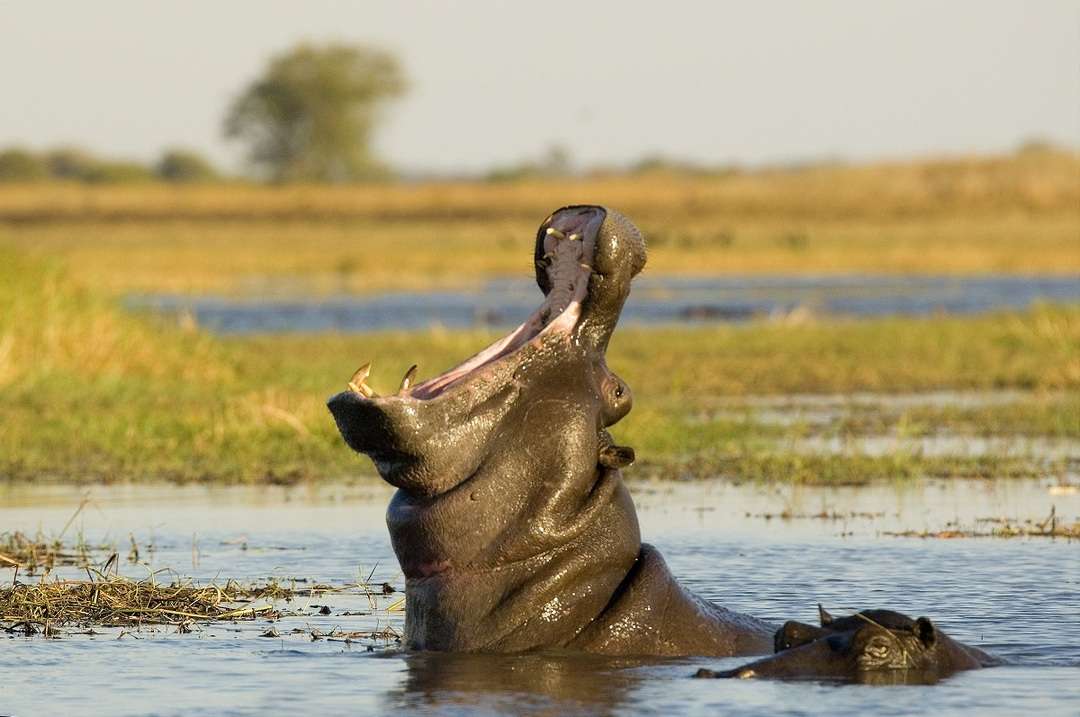
Africa’s Most Dangerous Animal, But Also Vulnerable on the IUCN Red list of Threatened Species
Hippopotamuses are some of the most unfriendly creatures in the animal kingdom. “Apart from mosquitoes, they are the most dangerous animal in Africa, the ones that kill the most people,” notes Prof. Mathevon. “People do underestimate them. They swim very fast and don’t hesitate to attack boats. They are in the water most of the time, but they can move out of the water very fast and run faster than humans over a short distance. Entering or invading their territory or space can be quite dangerous”. They may be Africa’s most dangerous animal, but the species itself also faces some threats that make its population more and more vulnerable. Accordingly, the common hippopotamus is currently listed as Vulnerable on the International Union for the Conservation of Nature (IUCN) Red List of Threatened Species, after a change of threat category from Least Concern in 2008. It remained in this threat category after a re-assessment in 2016.
Currently, East and Southern African countries represent the stronghold for this species with the largest number of hippos occurring in Kenya, South Africa, Tanzania, Uganda, and Zambia. Although they are not in immediate danger of extinction, they are vulnerable because of their specialised ecology.
Book your Hippo safari trip now, click here
Range-wide, populations of the common hippopotamus (hereafter hippo) have declined over the past several decades due to habitat loss and degradation, land transformation, ongoing droughts, and poaching. With the increased droughts associated with climate change, and the increased human demands for water, hippo subpopulations are further pressurised. This species is traded both locally and internationally for meat, trophies and in the live animal trade on a subsistence and commercial level. Another often overlooked threat to the common hippopotamus population in Africa, is the hippo ivory trade.

Let’s plan your next journey
Ready?
When we say we’re there every step of the way, we mean it, literally. From planning the perfect circuit, to private inter-camp transfers on Wilderness Air, and easing you through Customs. We’re with you on the ground, at your side, 24-7, from start to finish. Ready to take the road less travelled? Contact our Travel Designers to plan an unforgettable journey.
